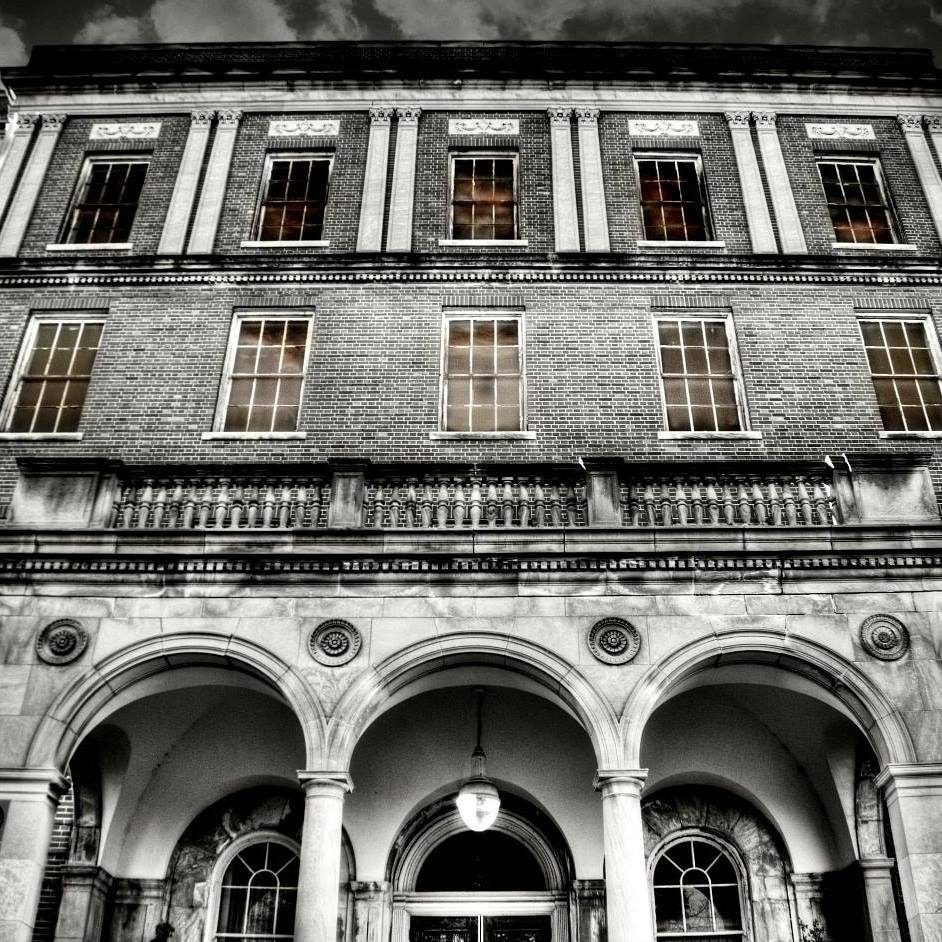
[ Built 1839 ] – [ Removed 1845 ]
In 1839, Samuel and Nancy Torbert executed a warranty deed for $800 to the Wayne County Commissioners for 160 acres of land on which was located the Black Horse Tavern, erected in 1828 on the old “Chicago Road” (now Michigan Avenue), and which served as a stagecoach stop between Detroit and Chicago. It was thereafter used by Wayne County for a Poorhouse; then used as a Keeper’s Residence until 1845.

At the same time, an adjacent 120 acres were purchased from the father of Samuel Torbert. As soon as the farm had been purchased, the Board erected a two-story from building as an addition to the Tavern for the inmates, reserving the log house for the Keeper. This building was designated as the Second County House. The inmates were transferred from the Institution in Detroit to the new quarters on April 11th, 1839. Records show that 35 persons were transferred, while 11 refused to go to the “awful wilderness.”

As soon as the Legislature convened in 1839, a bill was introduced which empowered the County Commissioners to dispose of their present County Poorhouse, authorizing them to borrow fund to build a new poorhouse and to purchase land as near as possible to the center of the County. At that time, Ammon Brown, a Superintendent of the Poor living in Nankin Township, believed that, not only was Nankin Township centrally located in Wayne County, but was also convenient to rail and stage roads and provide low-cost land. Through this effort, the County was encouraged to have that area selected as the new location.
Consequently, in 1839, Samuel and Nancy Torbert executed a warranty deed for 800 dollars to the Wayne County Commissioners for 160 acres of land on which was located the Blackhorse Tavern, erected in 1828 on the old “Chicago Road” (now Michigan Avenue), and which served as a stagecoach stop between Detroit and Chicago. At the same time, an adjacent 120 acres were purchased from the father of Samuel Torbert making the total acquisition 280 acres.
As soon as the farm had been purchased, the Board erected a two-story frame building as an addition to the tavern for the inmates, reserving the log house for the keeper. This building was designated as the Second County House. The inmates were transferred from the Institution in Detroit to the new quarters on April 11, 1839. Records show that 35 persons were transferred, while 111 refused to go to the “awful wilderness.”
[ This information presented in whole from “A History of the Wayne County Infirmary, Psychiatric, and General Hospital Complex at Eloise, Michigan” by Alvin C. Clark; page 4. ]
